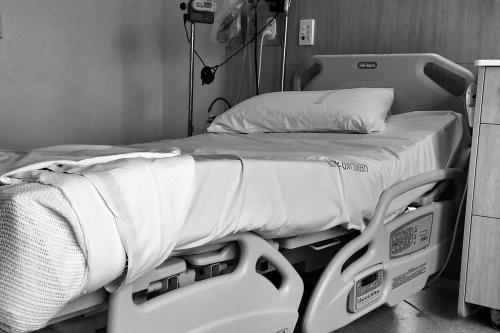Whether or not to admit a patient is one of the most routine yet important decisions a doctor in an Emergency Department (ED) makes. We might like to think that this decision is dependent solely on the clinical characteristics of the patient. But this is not the case.
The decision to admit is complex. It involves weighing risks against potential benefits. It’s likely therefore to be influenced by the confidence, experience and risk appetite of individual clinicians - and the support systems available to them. The decision is also taken within a wider context.
Our paper, published in Emergency Medicine Journal (EMJ) today looks at these issues. It explores whether these contextual factors, for example, the busyness of ED and the occupancy of inpatient beds, plays a part in admission decisions.
The headline finding is reassuring: the effect of these contextual factors is modest. It is only when levels of ED crowding and inpatient bed occupancy reach extremes that they appear to exert some influence on admission decisions.
As we might expect, admission thresholds rise when the number of emergency inpatients is particularly high. When the stock of inpatient beds is running low, hospitals must make tough decisions to discharge some ED patients that they would prefer to admit or keep them in the department for longer than they would like.
And ED staff don’t know who might arrive in the department next. If they admit the current patient, they reduce their flexibility to manage the next patient whose needs, as yet unknown, might be more pressing.
Paradoxically, we also found that admission thresholds rise when the number of emergency inpatients is particularly low. Our methods don’t explain this effect. But we can speculate. Might it be that when emergency bed occupancy is low, specialists in the admitting wards (e.g., cardiologists, gastroenterologists etc), are more available to support their colleagues in ED to take safe decisions to discharge patients with more complex presentations?
We also found that admission thresholds fall as the number of elective and maternity inpatients increases. Our theory here is that elective and ED patients often compete for scarce diagnostics capacity. When this capacity is being heavily used by elective and maternity patients, then less is available for patients in ED. And if ED clinicians can’t get a prompt test to rule out some risky diagnosis, then they may feel obliged to admit the patient.
This suggests potential virtuous circles. Hospitals that can effectively manage their bed occupancy - for example, by discharging more patients before noon, and by ensuring adequate, dedicated emergency diagnostic capacity - may be able to safely discharge many more patients, further reducing the pressure on beds.
Hospitals are much more like organisms than machines. They are dynamic, with the circumstances and decisions taken in one part of the building having complex effects elsewhere. Strategies must take account of this, seeing the whole as well as the parts.
The paper was published in the Emergency Medicine Journal (link here) and was produced with two colleagues from Walsall Healthcare NHS Trust: Dr Ruchi Joshi, Clinical Director for Emergency Services and Janet Mortimore, Information Manager.


